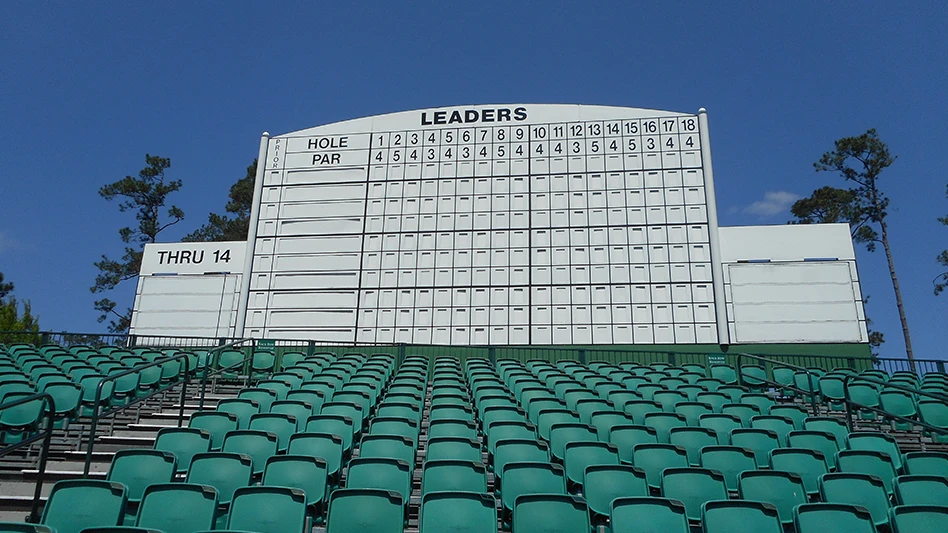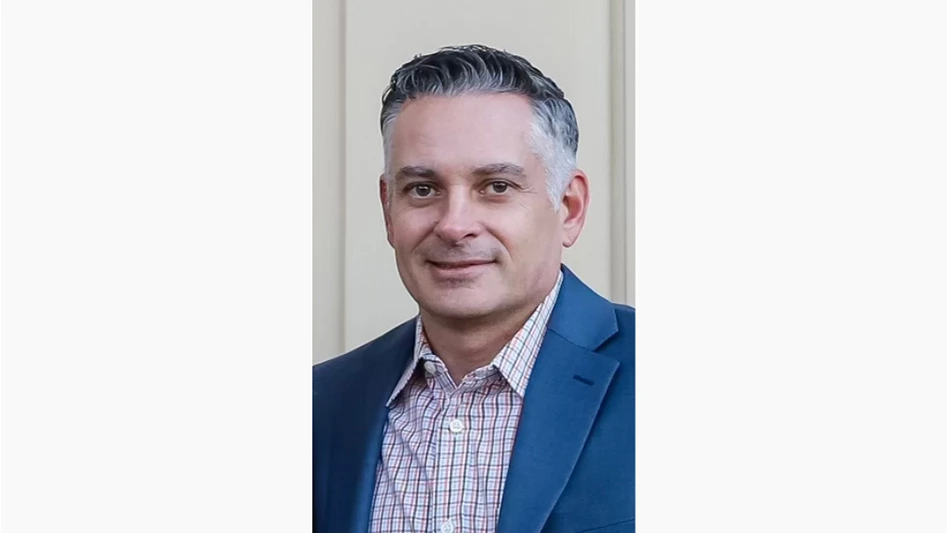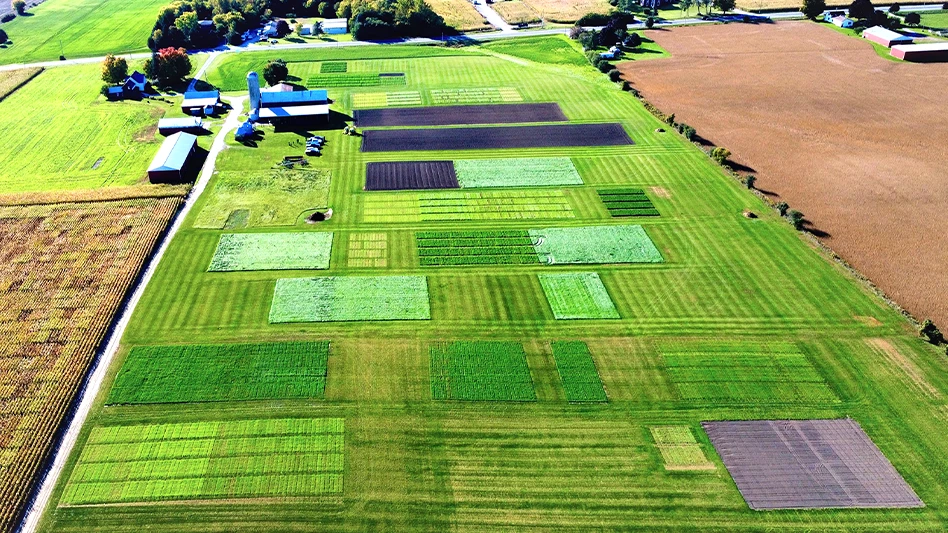
For decades, Greg Brandriet, like most Americans, turned his various clocks and watches forward one hour every spring and back one hour every fall. He never gave the practice much thought. Looking back, he now recognizes it likely disrupted his body, rhythm and sleep. It was just something everybody needed to do. There were no other options.
And then he moved to Arizona.
“I was kind of waiting for the change,” he says, “expecting it subconsciously. And when it didn’t happen …”
When it didn’t happen.

Brandriet is a native of the Dakotas. He lived and worked there all his life before a sudden work shift spurred him, his wife, Cori, and their two sons on an epic road trip (see One Superintendent’s Job Search, May 2023).The family landed in Arizona, where Brandriet is now the superintendent of the Ambiente golf course at JW Marriott Scottsdale Camelback Inn Resort & Spa — and where the natives haven’t switched their clocks since 1966.
Arizona is one of two U.S. states, along with Hawaii that remain on Standard Time when the rest of the country switches to Daylight Saving Time. But that might not be the case much longer. Legislators from 11 other states have discussed switching their constituents to permanent Standard Time. Far more states are working on a switch to permanent Daylight Saving Time. And a pair of Florida Congressmen have twice proposed the Sunshine Protection Act — potential federal legislation that would end the time changes and make Daylight Saving the law of the land.
What would a switch either way mean for you, your team and golf course maintenance in general?
Brandriet, for one, concedes that most golf course superintendents and maintenance team members are “up so early anyway, starting in the dark most of the time,” that permanent Daylight Saving or Standard time might not feel like a big deal. After all, the sun still rises before the first tee time and plenty of daylight normally remains after the workday ends. “But looking back over this last year,” he says, “it was noticeably more seamless. There’s no disruption to the cycle, and you don’t realize how jolting that is until you experience it both ways.

“There’s no confusion about changing the clocks. There’s no disruption to your sleep. It’s only one day and one hour, but it can take a week to recover from that change.”
The science backs up Brandriet. According to a 2020 study published in Sleep, the official journal of the Sleep Research Society, the week following the second Monday in March — after clocks spring forward an hour in 48 states — is filled with 18 percent more adverse events like traffic collisions and heart attacks than normal. The same study reports that the rate of adverse events is about 5 percent higher than normal the week after the first Monday in November after clocks fall back.
Much of that increase is normally pegged to disrupted and decreased sleep. A 2019 study published in Journal of Health Economics reports that most folks will lose about 19 minutes of sleep per night after the fall time change. Folks who start work before 7 a.m., though — pretty much everybody who works on a golf course — will lose about 36 minutes of sleep per night. Dr. Karin Johnson, vice chair for academic affairs in the Department of Neurology at UMass Chan Medical School-Baystate and vice-president of the nonprofit Save Standard Time, says, “Alignment with the sun is what’s really important.”
Brandriet agrees. “For our industry, overall,” he says, “I think not having to change would be beneficial.”
Luke Bennett experienced a similar transition and conclusion following a move to Hawaii. After long professional stints in and around Denver and California wine country, Bennett moved to the Big Island, where he is now director of golf course maintenance and grounds at Kohanaiki. And despite visiting the islands regularly before his transition, he didn’t know Hawaii had opted out of Daylight Saving Time during the 1966 passage of the Uniform Time Act. “It was one of those things that caught me off guard a little bit,” he says. “That and when I tried to go buy some scratch tickets to give to my guys for Christmas and they told me, ‘There’s no gambling here, dude.’”

Where Arizona favors permanent Standard Time because of its sweltering summers and falls, Hawaii prefers it because of its proximity to the Equator: The amount of daylight it receives during its shortest and longest days of the year differs by only about two hours.
“We get here at 5:30 and we work in the dark for a little longer than we would like to, but it’s totally fine,” Bennett says. “In the summertime, when it’s a little lighter in the morning, we can get out there and get out in front of everything a little more. It’s just not a big enough change for it to affect us.
“And after going through a few seasons, you realize you don’t need to change the start time for your guys. There’s no benefit to switching things up for golf and golf course maintenance.”
Congress has discussed clocks regularly in recent years, with U.S. Senator Marco Rubio and U.S. Representative Vern Buchanan, both of Florida, sponsoring the Sunshine Protection Act in 2018, ’19, ’21 and ’23. The bill has gained co-sponsors but lost support over time. Representatives from states on the western edges of time zones particularly oppose the bill — and any shift to permanent Daylight Saving — because of later sunrises. (Brandriet, coincidentally, moved from South Dakota, which is more perfectly divided by an imaginary time zone line than any other state. Curiously, no Mount Rushmore State reps have lobbied for a permanent switch to either Daylight Saving or Standard.)

“My impression is that we are shifting the momentum from permanent Daylight time to permanent Standard time,” says Jay Pea, president of Save Standard Time. “Since we’ve been working on this, the number of bills for permanent Daylight have decreased every year and the number of bills for permanent Standard have increased every year. At the state level and in Congress, there have been fewer sponsors of the current Sunshine Protection Act than there were in the previous Congress.” Pea mentions a recent vote in Nebraska that maintained the status quo but at least finished with more support for permanent Standard. “It’s very encouraging,” he says.
Pea says he thinks one state will soon pass a permanent Standard Time bill. “And once one state does that, then all the other states are going to see this is an option. Most legislators think Arizona and Hawaii have some special agreement, and that’s not the case. They’re simply following the law that was written in 1966.”
That 1966 law, the aforementioned Uniform Time Act, was enacted because “every city and town could make the decision whether they wanted to use Daylight Saving Time or not — and when they started and ended,” says Dr. David Prerau, a time change expert who favors Daylight Saving as what he describes as an “excellent” compromise and has written two books on the topic, including Seize the Daylight: The Curious and Contentious Story of Daylight Saving Time. “So one town could have it, the neighboring town could have it but start and end at different times, the next town could not have it all. And you wouldn’t know.”
Prerau mentions that Iowa once used 23 different time zones. Neighboring Illinois once used more than two dozen. A potential national patchwork wouldn’t likely be quite that disjointed, but different states could soon use different times as they did from 1918, after Congress first codified our four familiar contiguous time zones, until 1966. Pea expects regional pacts could develop, which would help still-hypothetical rollouts to permanent Standard Time.
Should the United States switch to permanent Standard Time, we would be joining the global majority: Internationally, 61 countries still observe some variation of Daylight Saving Time, but nine have eliminated it just during the 2020s.
And we have international figures to thank for our time changes. Founding Father Benjamin Franklin, the first U.S. Minister to both France and Sweden, is credited with the creation of Daylight Saving back in 1784 — though he suggested it only humorously to cut down on candle burning — and New Zealand entomologist George Hudson more formally proposed bending the clocks a century later to give himself more time to hunt for bugs. But before Canada, then Germany, and then the United States adopted it around World War I, a British man named William Willett campaigned hard for more evening sun.

He wanted later light so he could squeeze in some more golf.
Yes, a golfer is one of the reasons most of us have moved time and lost sleep twice every year our whole lives. Would it have been so hard for Willett to set his alarm for an earlier tee time?
No matter what happens in D.C., Bennett figures turf pros will roll with it.
“I think you adapt to anything that happens,” he says. “Daylight is daylight. We would all adjust to it accordingly. With or without it, most golf courses do have a time change for their staff once a year. This is the first place I’ve worked where we don’t.
“Nobody likes working in the dark, but sometimes you have to get the work done.”
WANT MORE?
Enter your email to receive our newsletters.

Explore the March 2024 Issue
Check out more from this issue and find your next story to read.
Latest from Golf Course Industry
- The Fittest Podcast in Turf: Episode 1
- GCSAA announces Grassroots Ambassador Leadership Award recipients
- Reel Turf Techs: David Gummo
- PBI-Gordon promotes two to executive level
- VIDEO: A First Green morning
- Bloom Golf Partners adds HR expert
- Seeking sustainability in Vietnam
- Kerns featured in Envu root diseases webinar





